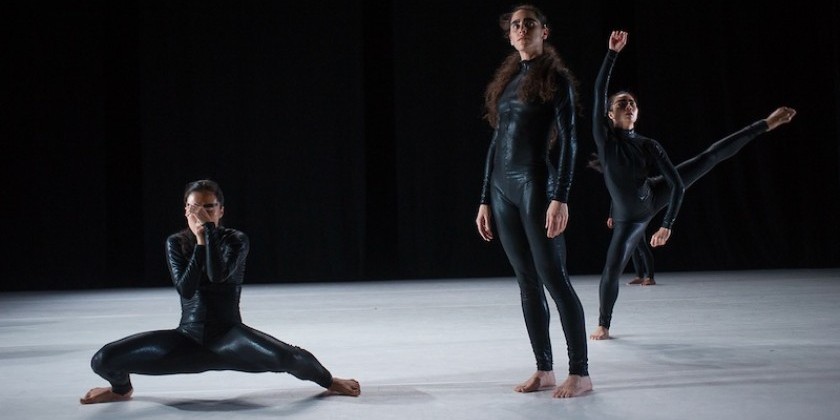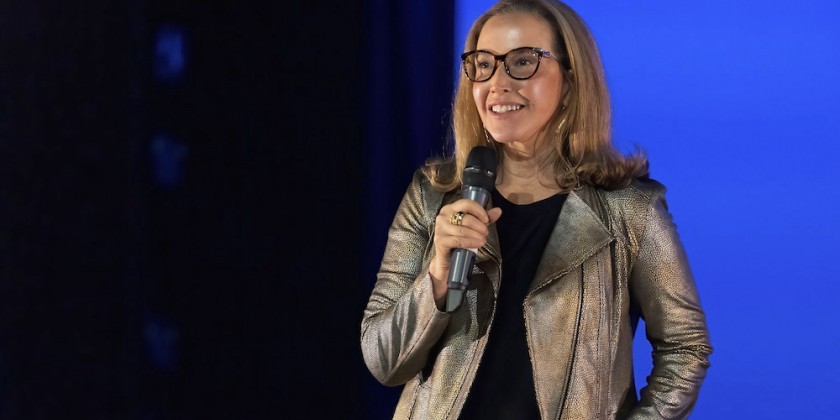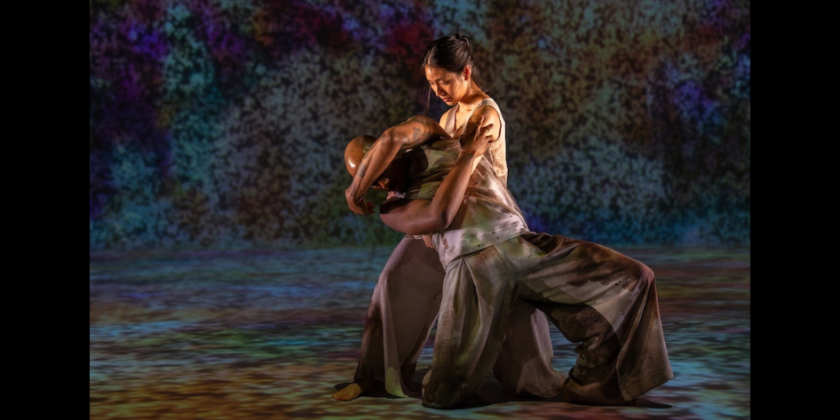Impressions of: “Grass and Jackals”

LeeSaar The Company
Presented by: The Joyce Theater on Sunday, February 9th
Choreography by: Lee Sher, Saar Harari and dancers
Performed by: Jye-Hwei Lin, Hsin-Yi Hsiang, Candice Schnurr, Hyerin Lee, Isabel Umali, Motrya Kozbur, Delphina Parenti
LeeSaar The Company, founded in Israel in 2000, makes its Joyce debut with the enigmatically titled Grass and Jackals. Combining dance and theater backgrounds, choreographers Lee Sher and Saar Harari produce a work that indulges in extremes.
The curtain opens to a group of writhing women in black unitards; they are mysterious and vaguely sexual, like temptresses of the underworld. With eyebrows painted in bold black, their individual faces are almost unrecognizable — from our vantage point, we just see pairs of adjacent lines floating though space.
Avi Yona Bueno’s lighting and an abundance of “fierce” eye contact with the audience give the feeling of a music video. In one particularly showy moment, a change of scrim shifts the eerie, ambient atmosphere to a slinky, more sexual vibe. The dancers strut in one by one and drop into a semi-sexual splayed position, staring at the audience for an uncomfortably long time.

Moments of subtlety do occur. Two dancers engage in an expansive, leggy duet as another couple stands next to them holding hands. In the midst of the sensationalism, this juxtaposition of complexity and simplicity is refreshing.
The cast, a powerful group of females, buzzes with intense womanly energy. Their incredible facility impresses: low lunges meet high legs, drastic level changes, and unbelievably fast footwork. Although the constant display of hyper-mobility can overwhelm, at times, it is simple enough to be tastefully stunning. One such moment transpires when a dancer finds herself alone: She sits in a huge fourth position, performing an epic, matrix-like backbend as the lights fade.
Grass and Jackals intrigues with its movement vocabulary, which is based in the Israeli technique of Gaga. The vast range of steps seems a result of the huge freedom allowed to the performers in the creation process. Each dancer has a specific groove, highlighting their talents. The captivating Candace Schnurr takes slow, underwater steps before diving into a 180-degree penché arabesque and hissing at the audience.

The intrinsic pleasure of movement, the root of Gaga’s philosophy, allows the dancers to indulge in the gratification of sensation. Often, the movement looks so luxurious that we yearn to move as the dancers do. When Jye-Hwei Lin runs in circles around the stage with her arms out to the sides like long, sinewy airplane wings, we can almost taste the cool air as it hits her sweaty face.
Towards the end of the piece, the underground world dissipates. Like a gyrating ray of sunshine amidst the eery darkness, the lithe and beautiful Lin emerges — a silver lining of sorts — clad in a shimmering gold unitard. Streams of glittery string fall from the ceiling approximating a shining waterfall. Lin moves to the front of the stage laughing like a hyena: The golden goddess has triumphed as the others melt into the background.
This last scene encapsulates the tension in Grass and Jackals. While wielding a strange and magical power much like a dream, the work lacks a sense of cohesion. Upon waking, its fantastical scenario — untethered to a definitive message — fades quickly.
Follow Theo Boguszewski on Twitter @Theoboguszewski












